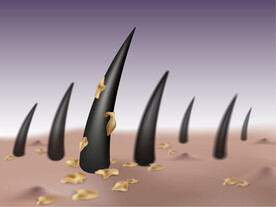Gallstones (Cholelithiasis): Causes, Pathogenesis, and Management
Gallstones, or cholelithiasis, are crystalline concretions that form in the biliary tract, most often within the gallbladder. They affect an estimated 10–20% of adults in developed countries and can lead to biliary colic, inflammation, and severe complications if left untreated.
Epidemiology and Risk Factors
- Prevalence increases with age; up to 25% in adults over 60.
- Risk factors (the “Four Fs”):
- Female
- Fat (obesity)
- Fertile (multiparity)
- Forty (age >40)
- Additional factors:
- Rapid weight loss or fasting
- Total parenteral nutrition
- Hemolytic disorders
- Diabetes mellitus
- Cirrhosis and cholestatic liver disease
- Ethnicity (Native American, Mexican–American)
Types of Gallstones
- Cholesterol Stones (75–90%):
- Yellow-green, form when bile is supersaturated with cholesterol.
- Pigment Stones:
- Black Pigment Stones: Associated with hemolysis; composed of calcium bilirubinate.
- Brown Pigment Stones: Related to infection; contain calcium salts of unconjugated bilirubin.
- Mixed Stones:
- Contain cholesterol, calcium salts, bilirubin, and phospholipids.
Pathogenesis
Gallstone formation is driven by three key factors:
- Cholesterol Supersaturation:
- Imbalance in bile composition (bile acids, phospholipids, cholesterol) leads to precipitation of cholesterol crystals.
- Gallbladder Hypomotility (Stasis):
- Prolonged bile stasis from obesity, pregnancy, prolonged fasting, or sphincter of Oddi dysfunction promotes stone nucleation.
- Nucleation and Crystal Growth:
- Mucins, inflammatory proteins, and bacterial beta-glucuronidase accelerate crystal aggregation and stone formation.
Additional Contributory Factors
- Bacterial Infection: E. coli and anaerobes deconjugate bilirubin, forming pigment stones and promoting inflammation.
- Parasitic Infection: Ascaris lumbricoides or liver flukes can serve as nidus for stone formation in endemic regions.
- Metabolic and Genetic Influences: Variations in cholesterol metabolism and gallbladder contractility.
- Role of Metal Ions: Elevated calcium and magnesium levels in bile may enhance nucleation.
Clinical Features
- Many patients are asymptomatic (“silent stones”).
- Biliary Colic: Episodic RUQ or epigastric pain radiating to the back or right shoulder, often postprandial.
- Acute Cholecystitis: Persistent pain, fever, leukocytosis, and Murphy’s sign.
- Complications:
- Choledocholithiasis and cholangitis (Charcot triad).
- Gallstone pancreatitis.
- Gallbladder empyema or perforation.
Diagnosis
- Transabdominal Ultrasound: First-line; high sensitivity for gallstones and gallbladder wall thickening.
- HIDA Scan (Cholescintigraphy): Assesses cystic duct patency in acute cholecystitis.
- MRCP/ERCP:
- MRCP noninvasive imaging of biliary tree.
- ERCP for diagnosis and therapeutic stone extraction in choledocholithiasis.
- Laboratory Tests: Elevated liver enzymes and bilirubin in complicated stones; leukocytosis in cholecystitis.
Management
Asymptomatic Gallstones
- Observation; elective cholecystectomy for high-risk (elderly, immunosuppressed).
Symptomatic Gallstones and Complications
Cholecystectomy
- Laparoscopic Cholecystectomy: Gold standard unless contraindicated.
- Open Cholecystectomy: For complex anatomy or peritonitis.
Endoscopic and Percutaneous Interventions
- ERCP: Stone extraction and stenting for common bile duct stones.
- Percutaneous Cholecystostomy: Temporary drainage in critically ill patients.
Medical Therapy
- Ursodeoxycholic Acid (UDCA): For cholesterol stones in patients unfit for surgery; prolonged therapy required.
- Extracorporeal Shock Wave Lithotripsy: Rarely used; for select patients with solitary stones.
Prevention and Patient Education
- Maintain healthy weight via balanced diet and regular exercise.
- Avoid rapid weight loss; follow gradual calorie-restricted programs.
- Manage underlying metabolic conditions and avoid prolonged fasting.
- Educate patients on recognizing biliary colic and seeking prompt care for complications.
References
- Portincasa P, Di Ciaula A, de Bari O, et al. Cholesterol gallstone pathogenesis: new insights into the role of nuclear receptors and the gut microbiota. Gastroenterology. 2020.
- Stinton LM, Shaffer EA. Epidemiology of gallbladder disease: cholelithiasis and cancer. Gut Liver. 2012.
- Lammert F, Gurusamy K, Ko CW, et al. Gallstones. Nat Rev Dis Primers. 2016.
- Mann DV. The aetiology of gallstones in adults. Br J Surg. 2019.







